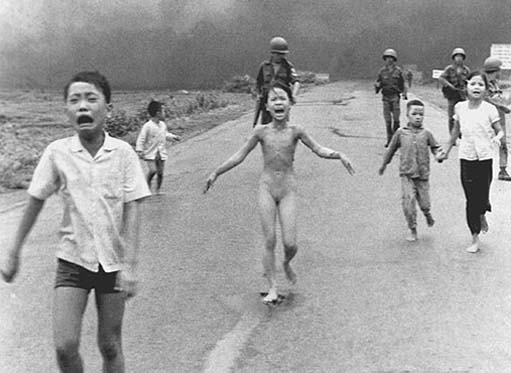1.2 The immediacy of the still photograph
Let's begin with an example that links an historical event to a photograph. Take a moment to think about the pictures you keep in your ‘mind's eye’. Now think about the Vietnam War for a few seconds. Try to recall what images you associate with that period. It may be that you are too young to recall anything about the time; you may remember it all too vividly. It really does not matter too much for this exercise. Just see what images come into your mind when you think about that time in recent history.

It could be that one particular image jumps into your mind. We think there's a good chance that it may be a 1972 photograph by a Vietnamese photographer, Huynh Cong (Nick) Ut. This picture (Figure 1) shows a young South Vietnamese girl, Phan Thi Kim Phuc, crying and running naked down a road, with other children, her clothes burnt from her body by napalm dropped by US planes.
This ‘jumping into the mind’ aspect of photographs is noticed by most people. The media often refer to ‘iconic’ images, by which they mean well-known photographs that are immediately recognised, as ‘icons’ of a particular time, place, person, or idea. Advertising frequently employs or seeks to create iconic images where it can. Propaganda works in a similar way. A single strong image can catch our attention and remain in our memory for a long time.
This all suggests that there is an immediacy about single images – as opposed to passages of film or TV – that helps them stick in the mind. This is undoubtedly part of the psychological processes of perception and cognition. In the psychological sub-field known as ‘perception’, the study of how we comprehend images is given much attention. A whole field of psychology has been developed to understand and explain the ways in which our minds attempt to construct meaningful images from the perceptual disorder that surrounds us.
